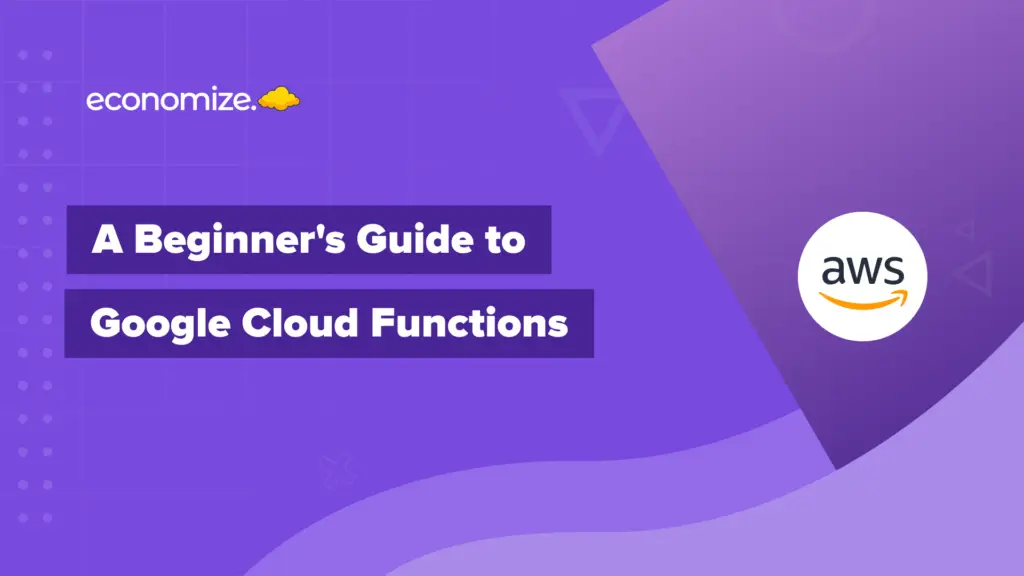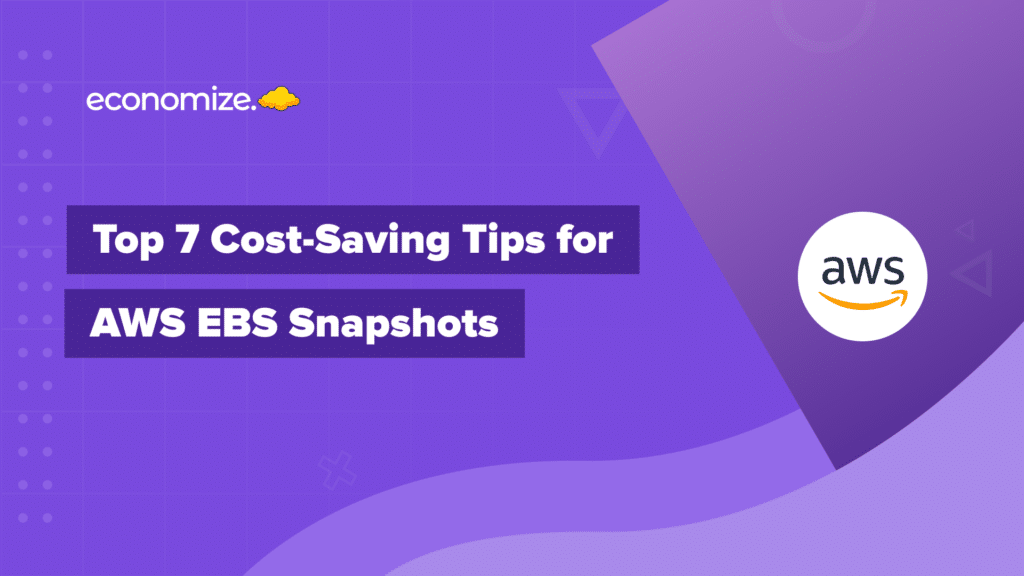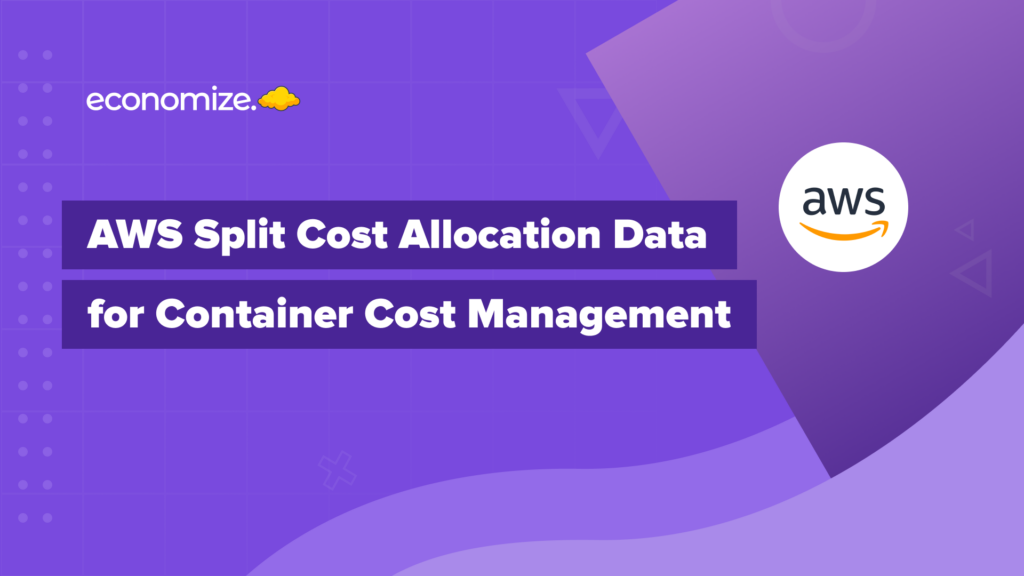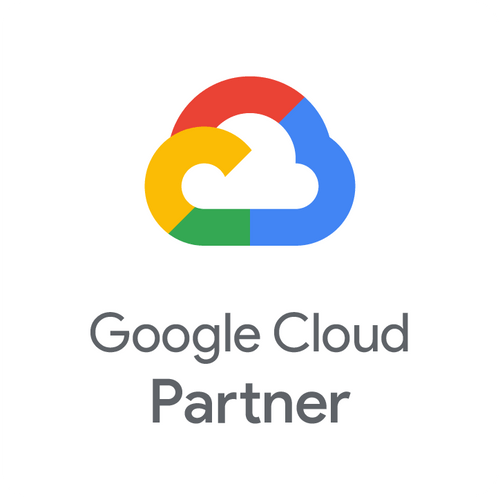Businesses operating in the cloud have to constantly battle between two decisions: Maintaining profitability, or constantly innovating their offerings to stay competitive.
An impressive 82% of North American organizations pinpoint cloud spending as their chief obstacle, a scenario compounded by projections that global spending on public cloud services will soar to $591.8 billion at the end of 2024.

About 35% of this massive expenditure is expected to be lost to cloud waste. Worldwide end-user cloud spend and future predictions. In 2023, the overall expenditure was nearly $600 Billion.
FinOps tools equip organizations with insights into cloud waste, enabling better visibility and curtailing of excessive expenditures. They help businesses to align their cloud usage with business objectives.
In this guide, we’ve researched and consolidated a variety of third-party FinOps tools available in the market. Our objective is to equip you with a detailed comparison, features, advantages & disadvantages, and pricing structures of these tools, helping you make a data-backed decision in optimizing your cloud financial management.
The reasons behind high cloud spend
- Improper Application Configuration: High cloud expenses often stem from incorrectly configured applications, like using costly resources where cheaper alternatives are viable. An organization might use the more expensive S3 Standard for storing infrequently accessed compliance data, where the lower-priced S3 Glacier would be more cost-effective and equally efficient.
- Disconnect Between Teams: A significant issue is the lack of coordination between engineering and finance teams. In a disjointed environment, engineers might provision resources as needed but neglect to decommission them post-usage. Such overlooked resources could be effectively utilized by other departments, preventing the unnecessary spinning up of new, cost-incurring resources.
- Absence of a FinOps Strategy: Without a streamlined FinOps strategy, organizations tend to operate with a blind spot towards their ongoing cloud resource usage and expenditures, only addressing cost inefficiencies reactively once the bill arrives.
Cloud spend management tools are instrumental in steering organizations towards mindful cloud expenditure. They help increase visibility into your environment, and provide timely alerts for swift action.
Top 15 Cloud Cost Management Tools
Choosing the right tool is pivotal and should be aligned with your organization’s specific workloads, usage patterns, and infrastructural considerations. The right tool seamlessly integrates into your operational fabric, enhancing rather than complicating workflows.
In this guide, we’ve meticulously curated a list of the top 15 spend management tools, each evaluated with a discerning eye to assist you in making a choice that is both informed and strategic.
Economize
Economize provides by far, the most convenient cloud cost management platform. Users can obtain an overview of monthly expenditures, unit costs, budgeting strategies, instance visibility, and much more. A multitude of services are at the user’s disposal, and a smart combination of them results in significant cost savings.
Unlike other cloud cost management products, Economize detects inefficiencies, provides recommendations that helps set up guard rails and measures to ensure constant optimization.
Economize is the most granular cloud cost visibility service yet in this ever-changing environment. It is designed to be tailored to your organization, so size and other hurdles are taken out of the equation.
Advantages
- A dashboard containing smart insights always provides valuable information that is crucial to decision making.
- Grants users the ability to view in-depth expenditures, resource utilization, and unit costs.
- You can integrate your AWS, GCP accounts with Slack, Teams, Discord and many more integrations. Think about getting a weekly summary of your entire cloud costs, this helps in greater efficiency when working on multiple projects with multiple teams.
- Variety of features are provided in cost reports, which can be arranged in whatever granularity or visualization format desired by the user.
- Automatic anomaly alerts provide real-time updates and enough information to find the influencing factors.
- Provides intelligent recommendations to get rid of under-utilized resources, and optimization tips for your specific use cases.
Economize Pricing
- Free tier: No cost, ideal for tracking up to $10k monthly cloud spend, no credit card required.
- Plus tier: Costs $99 per month, best for organizations with $50k monthly cloud spend.
- Premium tier: Priced at $499 per month, most suitable for fast-growing companies spending $50k to $100k on the cloud monthly.
- Professional tier: Costs $999 per month, designed for businesses with $100k+ monthly cloud spending and multiple accounts.
Spot
Spot is a modern cloud optimization and cost control application that focuses on assisting businesses in automating data-driven improvements. Spot is also a cloud management platform, as opposed to more typical tools that present possibilities but leave execution to the organization. This tool is primarily for engineering teams, with a focus on finance as a secondary consideration.

Advantages
- Provides cloud framework optimization features, including container installations.
- Cost visibility across AWS, GCP, and Azure is supported.
- Provides optimization suggestions that can be implemented in a few simple steps.
- Cost trends that appear out of the ordinary based on usage patterns are shown. Forecasted spending based on historical consumption data is displayed.
Spot.io Pricing
- Free: Provides a cost-free way to try out Spot, 9×5 email only support, contracted SLA, 24×7 proactive NOC monitoring, connected to 1 cloud account, and a customer success package. Up to 20 virtual machines.
- Pay-as-you-Go: Month-to-month term, 24×7 email and live chat support, contracted SLA, 24×7 proactive NOC monitoring, unlimited connected cloud accounts, customer success package, and price is a percentage of savings realized. Contact Spot for the scale varies by scenario.
- Subscription: Annual term, 24×7 email and live chat support, contracted SLA, 24×7 proactive NOC monitoring, unlimited connected cloud accounts, customer success package, training and remote workshops, onboarding consulting session, early access and preview, and unlimited scale. Price is negotiated based on usage and savings.
Kubecost
Kubecost gives visibility into a company’s Kubernetes resources, allowing it to cut costs and avoid resource-related outages. The tool focuses solely on finding Kubernetes costs and optimization options, with no consideration for non-cluster cloud costs such as resources in AWS, GCP, or Azure. This tool is primarily for engineering teams.

Advantages
- Allocating and optimizing Kubernetes cloud costs is the focus of this product.
- Contains tools that aid in the improvement of infrastructure and the avoidance of outages.
- Cost visibility is near real-time.
Limitations
- This single solution cannot be used to view or manage all cloud expenditures, particularly outside of Kubernetes.
Kubecost Pricing
- Free: Includes unlimited individual clusters, 15-day metric retention, compatibility with EKS, AKS, GKE, on-prem, and more. Offers cost monitoring & allocation, cost savings insights & actions, cost reconciliation for price accuracy, and community support.
- Enterprise: Builds on the free plan with features like a unified multi-cluster view, unlimited metric retention, multi-cloud or hybrid-cloud support, saved reports & custom pricing sheets, SSO/SAML, budgets, alerts & notifications, and dedicated enterprise support.
Densify
Customers may use Densify to manage VMware, cloud, and container infrastructure while maintaining performance. Through machine-learning recommendations and automation, this solution allows you to take control of cost and cloud performance.
With insightful guidance, risk assessment, and extensive reporting tools, Densify can help you save money. The tool looks at CPU/Memory utilization and confirms that programs are using the right instance types. This platform works well in single-cloud, hybrid-cloud, and multi-cloud scenarios.

Advantages
- Provides cloud infrastructure optimization features, including container installations.
- Cost visibility across AWS, GCP, and Azure is supported.
- Provides optimization suggestions that can be implemented in a few simple steps.
- Cost trends that appear out of the ordinary based on usage patterns are shown.
- Forecasted spending based on historical consumption data is also displayed.
Densify Pricing
- Densify offers a tiered pricing structure, with costs reducing per instance as the number of instances increases.
- For 1000-2000 instances, the cost is $48.3 per instance per year.
- For 2001-3000 instances, the cost is $43.47 per instance per year.
- For 3001-5000 instances, the cost is $39.12 per instance per year.
- Additional taxes or fees may apply.
- The given costs are for a 12-month subscription duration.
CloudCheckr
CloudCheckr is a company that focuses on cloud expense management and security. CloudCheckr has a lot of features to help you manage your reservation portfolio. The platform offers practical suggestions for adjusting existing bookings to maximize coverage and reduce waste.
A utilization heatmap and visualization panel are also included in the toolbox, which may be used to determine usage patterns and organize planned shutdowns. CloudCheckr is a suitable solution for firms using cloud computing in high-risk industries that want to keep the number of management tools short due to the link between cost efficiency and security.

Advantages
- A reliable security solution that monitors and assesses cloud risks and threats on a regular basis.
- In high-risk industries, it assists with regulatory compliance.
- Strong backing for portfolio management of reservations.
- Decommissioning old Amazon EBS snapshots with advanced functionality.
CloudCheckr Pricing
- CloudCheckr offers a SaaS solution priced at 3.5% of cloud spend with a monthly minimum of $500.
- The cost for a 1-month and a 12-month subscription are $0.01/unit and $0.02/unit respectively.
- Additional usage fees are applicable if usage exceeds the contract, determined by the number of units used above the contract.
- SaaS license fee for additional usage is $0.035/unit, calculated month to month.
- $500 per month for each unit above the contracted amount.
CloudHealth
CloudHealth is a cloud cost analysis tool that focuses on cloud governance. Cloudhealth was the industry’s first important tool of its sort, and it lets customers gain visibility into their spending, optimize it, and set policies that fit compliance and financial management requirements. Finance teams will benefit the most from this service.

Advantages
- Creates and manages financial controls with excellent governance features.
- Cost visibility across several clouds and hybrid clouds is supported.
- Cost-cutting recommendations are made across all of your workloads, including reserved instance purchasing and rightsizing.
- Has budgeting and forecasting features that assist teams in staying inside budget.
CloudHealth Pricing
- CloudHealth for AWS has a pricing structure that charges a flat fee for AWS spending up to $100,000, and then 3% of your monthly spend. A $1,000 minimum fee applies. No upfront payment is required.
- For AWS spending over $100,000, the annual cost is $41,904 for 12 months, $83,808 for 24 months, and $125,712 for 36 months.
- Additional usage fees of $0.03 per dollar spent apply monthly if the contractual usage terms are exceeded.
- CloudHealth Secure State and customer support, including onboarding support, cost $13,800 for 12 months and $39,060 for 24 months for 100 cloud resources each month.
Apptio Cloudability
Cloudability is a cloud management software aimed at assisting customers in gaining visibility into their spending, as well as managing and optimizing it. They also assist businesses in visualizing how their cost profile will change as a result of a cloud migration. FinOps and financial teams will benefit the most from this tool.

Advantages
- Cost visibility across AWS, GCP, and Azure is supported.
- It has a tag explorer that may be used to locate missing tags throughout the infrastructure.
- Anomaly detection, budgeting, and forecasting features enable teams prevent or anticipate cloud spending shocks.
- ITFM tools have a plethora of integration options.
- Cost visibility across many clouds is supported.
- Contains an integrated explorer that locates missing tags throughout the infrastructure.
Limitations
- AWS has strong support, however Azure, GCP, and on-premises stacks have limited support.
Apptio Cloudability Pricing
Apptio Cloudability offers pricing plans based on monthly AWS spend.
- To manage up to $150K of monthly AWS spend, the annual cost is $54,000. Additional fees apply if spending exceeds $150K/month.
- To manage up to $300K of monthly AWS spend, the annual cost is $97,200. Additional fees apply if spending exceeds $300K/month.
- To manage up to $600K of monthly AWS spend, the annual cost is $162,000. Additional fees apply if spending exceeds $600K/month.
Vantage
Vantage is a powerful multi-cloud expense management and optimization platform that focuses on providing detailed visibility and actionable insights across multiple cloud providers, including AWS, GCP, and Azure. With a comprehensive feature set and a wide range of integrations, Vantage helps organizations of all sizes to efficiently manage and optimize their cloud expenditure.

Advantages
- Supports multiple cloud providers, including AWS, GCP, and Azure, making it an excellent choice for organizations with multi-cloud or hybrid cloud infrastructures.
- Offers a wide range of integrations with popular services such as Datadog, BigQuery, and Slack, enabling seamless collaboration and enhanced efficiency across teams and projects.
- Delivers actionable recommendations for cost optimization, including right-sizing instances, identifying unused resources, and optimizing storage.
- Allows for custom tagging rules and cost allocation strategies, enabling better tracking and management of cloud spend across departments or projects.
Vantage Pricing
Vantage offers four pricing tiers:
- Starter: Free for tracking monthly costs up to $2,500
- Pro: $30/month for tracking monthly costs up to $7,500, with a 14-day free trial
- Business: $200/month for tracking monthly costs up to $20,000, with a 14-day free trial
- Enterprise: Custom pricing for tracking monthly costs over $20,000
FinOut
Finout is a cloud cost management solution that emphasizes collaboration and communication finance and engineering teams. By promoting transparency and understanding across these teams, Finout helps organizations achieve better control over their cloud costs and drive more efficient cloud usage.

Advantages
- Facilitates collaboration between finance and engineering teams by providing a shared platform for cloud cost analysis and optimization.
- Offers customizable dashboards and reports tailored to different stakeholders’ needs, promoting better understanding and decision-making.
- Provides intelligent recommendations for cost optimization based on usage patterns and resource allocation.
- Integrates with popular tools like Slack and Jira, allowing for seamless communication and collaboration.
Finout Pricing
FinOps pricing is structured into three tiers:
- Free Tier: No cost, supporting a maximum yearly spend of $50,000 with one cost center, six months of data retention, unlimited users, and a SOC2 report.
- Business: $500 per month, supporting a maximum yearly spend of $500,000 with two cost centers, one year of data retention, unlimited users, and a SOC2 report.
- Pro: $1000 per month, supporting a maximum yearly spend of $2 million with three cost centers, one year of data retention, unlimited users, and a SOC2 report.
ProsperOps
ProsperOps is a AWS cloud cost reduction tool that focuses on helping organizations get the most out of their AWS Reserved Instances and Savings Plans. By automating the process of purchasing and managing these cost-saving options, ProsperOps ensures that organizations consistently maximize their savings.

Advantages
- Automates the process of purchasing and managing AWS Reserved Instances and Savings Plans, helping organizations achieve cost savings with minimal effort.
- Provides real-time insights into AWS spend and potential savings opportunities.
- Supports multiple AWS accounts, making it suitable for organizations with complex account structures.
- Easy-to-use interface that simplifies the management of AWS cost-saving options.
ProsperOps Pricing
ProsperOps pricing is based on savings share:
- For base dollars saved from other compute savings commitments, it costs $0.03 per unit.
- For flex dollars saved from purchased/optimized Convertible Reserved Instances (RIs), it costs $0.30 per unit.
Granulate
Granulate is an AI-driven cloud visibility & optimization tool that focuses on optimizing application performance and infrastructure utilization. By leveraging real-time data and machine learning, Granulate provides actionable insights and recommendations to help organizations reduce & monitor cloud costs and improve application performance.

Advantages
- AI-driven optimization provides intelligent recommendations based on real-time data and usage patterns.
- Focuses on optimizing application performance, ensuring that cost savings do not come at the expense of performance or user experience.
- Provides detailed reporting and analytics to support data-driven decision-making.
- Offers a seamless integration with popular CI/CD tools, allowing for easy implementation of optimization recommendations.
Granulate Pricing
Granulate’s pricing is based on the number of vCPU units managed:
- For up to 1,000 vCPU units, it costs $8,640 per month or $103,360 per year.
- For up to 15,000 vCPU units, it costs $129,600 per month or $1,555,200 per year.
- For up to 50,000 vCPU units, it costs $432,000 per month or $5,184,000 per year.
Ternary
Ternary is a cloud cost management and optimization platform that focuses on providing actionable insights and recommendations to organizations using AWS, GCP, and Azure. With a strong emphasis on simplicity and ease of use, Ternary enables users to quickly gain visibility into their cloud spend and identify areas for optimization.

Advantages
- Offers a user-friendly interface and intuitive dashboards, making it easy for users to analyze and optimize their cloud costs.
- Provides actionable recommendations for cost optimization, including right-sizing instances, identifying unused resources, and optimizing storage.
- Allows for custom tagging rules and cost allocation strategies, enabling better tracking and management of cloud spend across departments or projects.
- Integrates with popular project management and collaboration tools, promoting seamless communication and collaboration between teams.
Ternary Pricing
Ternary pricing is structured around monthly cloud spend levels:
- Small: For up to $25,000 of cloud spend per month, it costs $25,000 per year.
- Medium: For up to $100,000 of cloud spend per month, it costs $67,500 per year.
- Large: For up to $250,000 of cloud spend per month, it costs $100,000 per year.
Flexera
Flexera provides a comprehensive cloud management platform that includes cost optimization features. It gives businesses the ability to visualize, analyze, and optimize their cloud usage to reduce costs. With Flexera, you get detailed visibility into your GCP costs and the ability to rightsize instances and identify idle resources.

Advantages
- Cost Visibility and Insights: Detailed cost breakdowns and trend analysis to understand where and how your cloud budget is being spent.
- Cost Allocation and Chargeback: Allocate costs to different departments, teams, or projects, and automate chargeback processes.
- Savings Opportunities: Provides recommendations for cost savings, such as identifying idle resources, suggesting right-sizing opportunities, and reserved instance recommendations.
Flexera Pricing
- Flexera employs a percentage of monthly spend pricing model with no upfront payment, but with a minimum charge of $1,000 USD.
- For organizations with $125,000 USD of monthly AWS spend, the fixed annual costs are as follows:
- 12 months: $40,681
- 24 months: $81,362
- 36 months: $122,044
Centilytics
Centilytics is a cloud management platform that provides comprehensive cost optimization solutions. Its cost analytics feature provides granular insights into cloud spend, identifying cost leaks and recommending potential savings. Centilytics helps businesses to control their GCP spend efficiently and effectively.

Advantages
- Cost Optimization: Provides detailed cost insights and offers recommendations for resource optimization to reduce cloud expenses.
- Security & Compliance: Ensures your cloud infrastructure aligns with industry-standard compliance requirements and identifies security vulnerabilities.
- Operations & Automation: Streamlines cloud operations through automation, reducing the manual effort required for cloud management.
Centilytics Pricing
- Centilytics offers pricing starting from $500.00/month with both free and subscription models, and a free trial option.
- Enterprise Pricing: An annual consumption pack for $2M is available at a cost of $30,000 per annum, utilized based on consumption rate throughout the year.
- Bucket Pricing: Monthly consumption bucket of $100K-200K is offered at a fee of $4000/month with no rollovers to subsequent months, as pack validity is limited to the month of purchase.
Virtasant
Virtasant is a cloud solutions provider that offers cost optimization services for GCP & AWS. It provides a clear view of your cloud spend, designs cost-saving strategies tailored to your specific needs, and offers comprehensive cloud management services. Virtasant can help businesses optimize their cloud spending and manage their cloud resources more efficiently.

Advantages
- Cost Visibility: Provides a clear view of your Google Cloud spend, broken down by resources and services.
- Customized Optimization: Designs cost-saving strategies tailored to your specific needs and workloads.
- Cloud Management: Offers comprehensive cloud management services, including resource management and optimization.
Virtasant Pricing
Virtasant offers pricing on a private basis, and potential customers are encouraged to contact the seller directly for rate inquiries.
How to choose the right tool to try?
As the cloud continues to revolutionize the way businesses operate — managing the associated costs becomes paramount. Cloud cost optimization tools is turning out to be a must, alongside your tools for monitoring, observability.
There are free, paid tools, and also open source cloud cost management tools, enterprise-specific tools. Depending upon the type of business, by leveraging these tools, organizations can not only demystify their cloud expenses but also harness the full potential of the cloud without the fear of unexpected costs.
Looking to implement a cloud cost optimization tool?
As cloud resources become increasingly integral to business operations, ensuring fiscal discipline through effective budgeting and FinOps will only grow in importance. If your organization is facing high AWS & GCP expenditure, book a free demo with Economize today and see how we can help you save up to 30% costs within 10 minutes!









